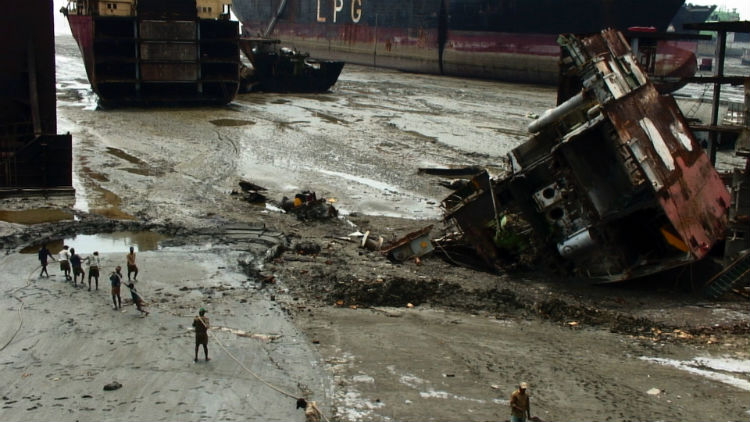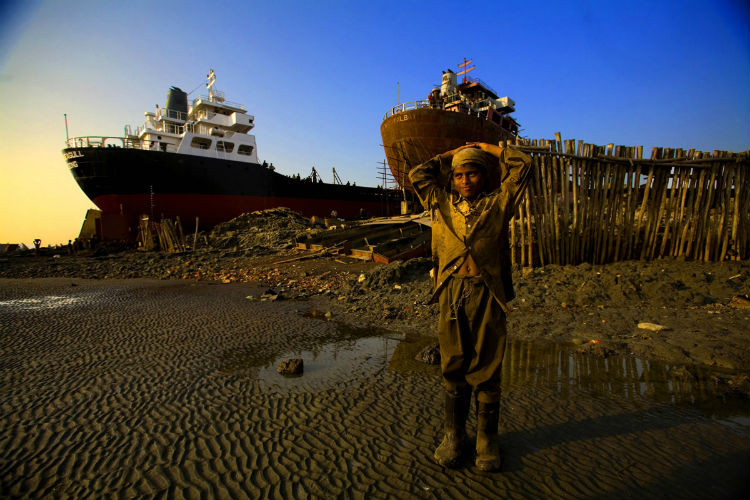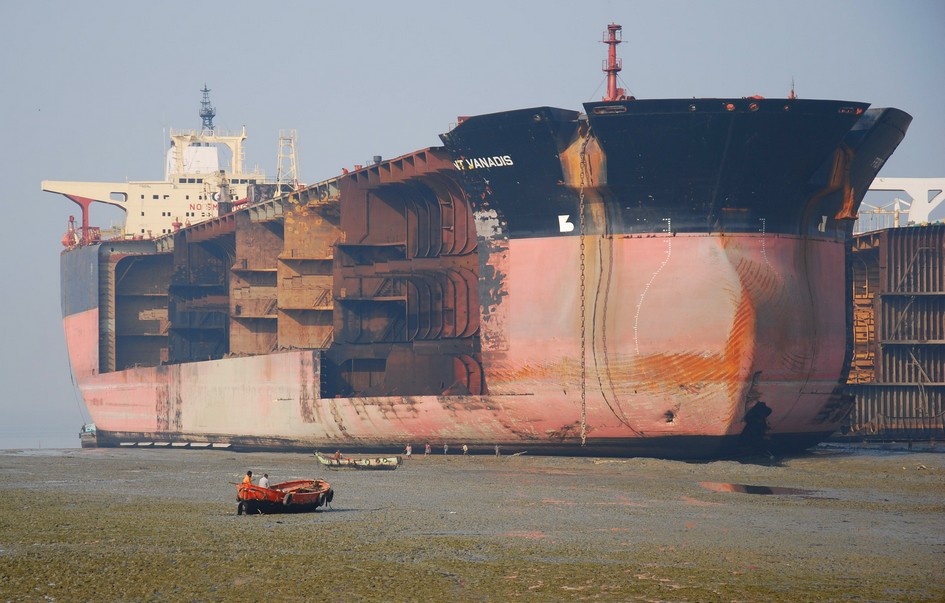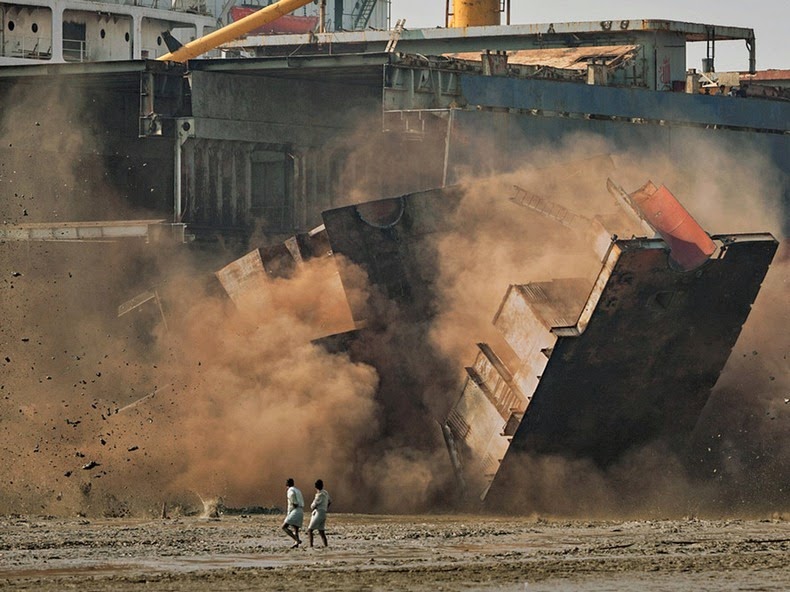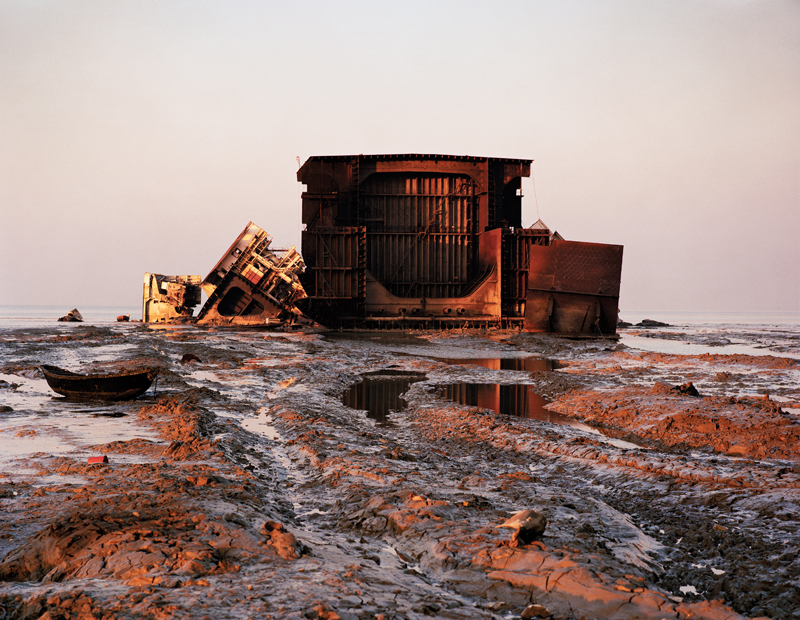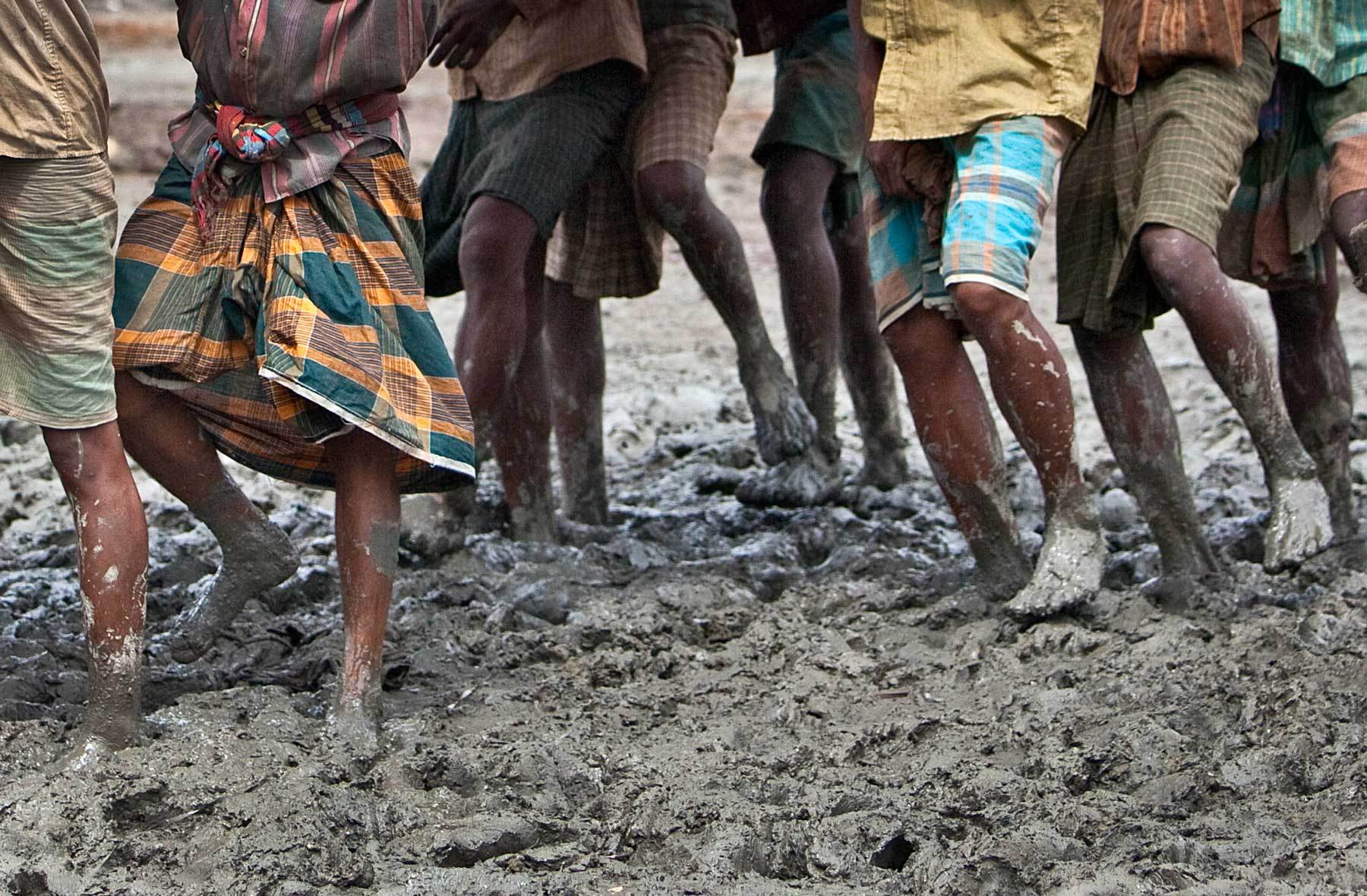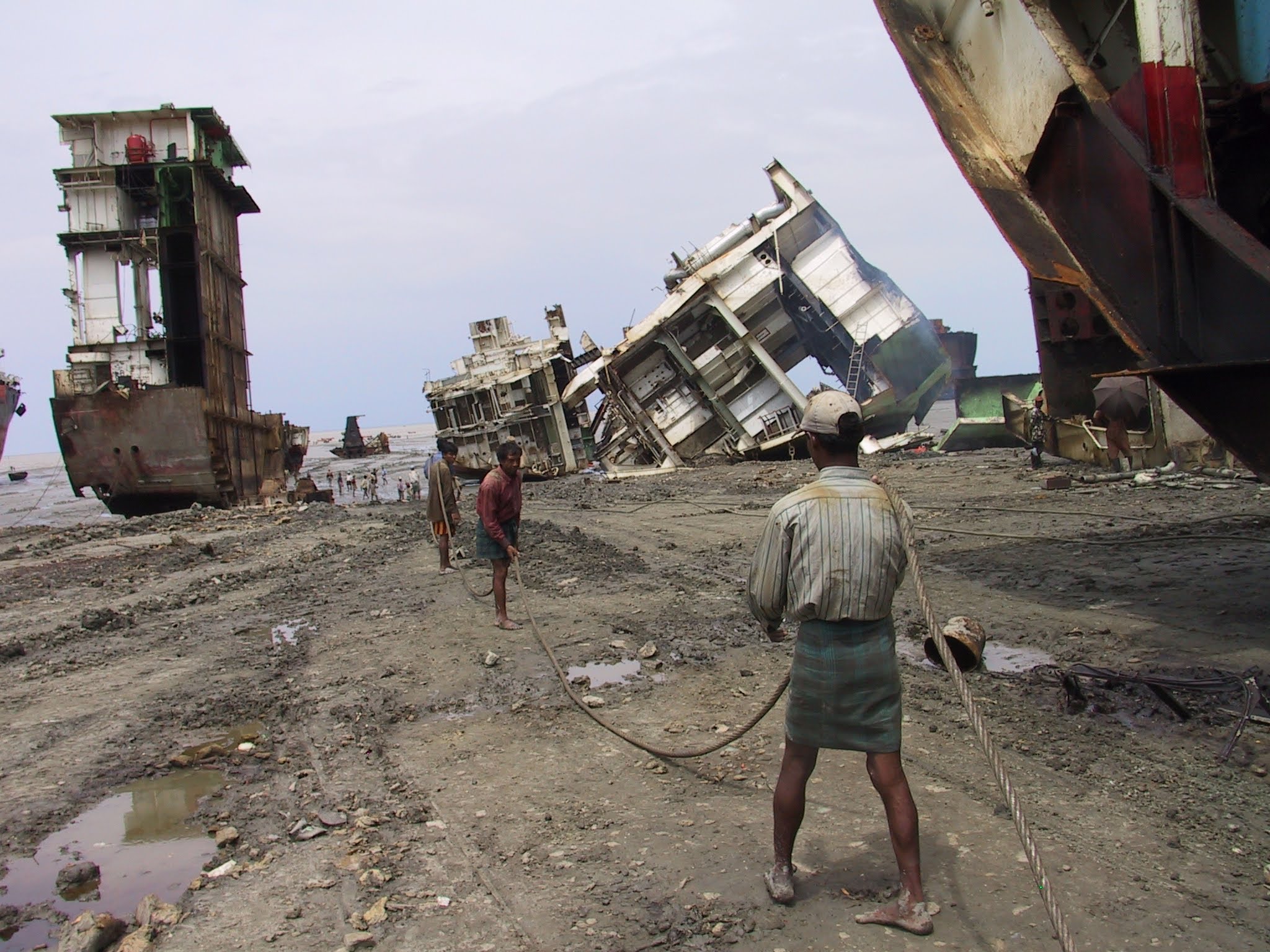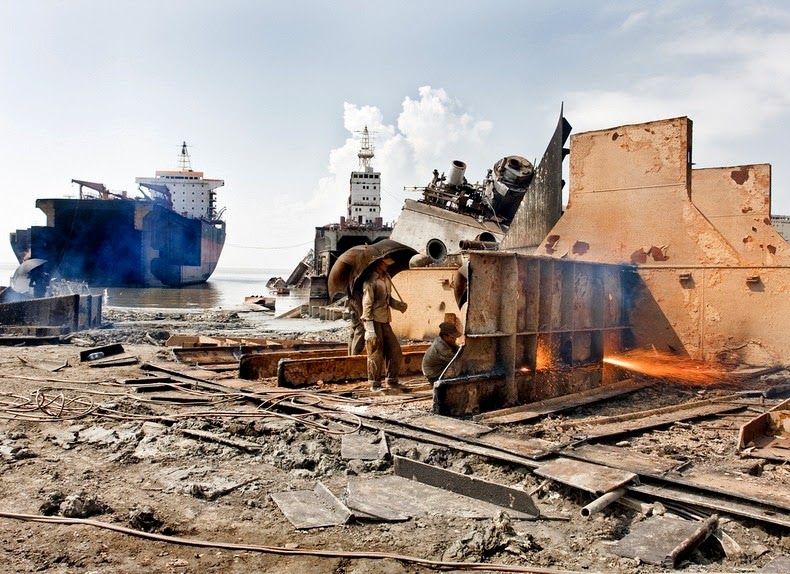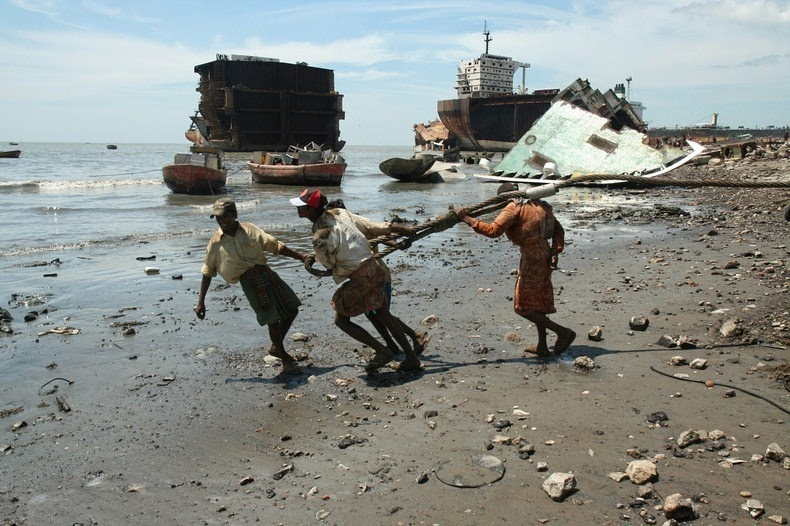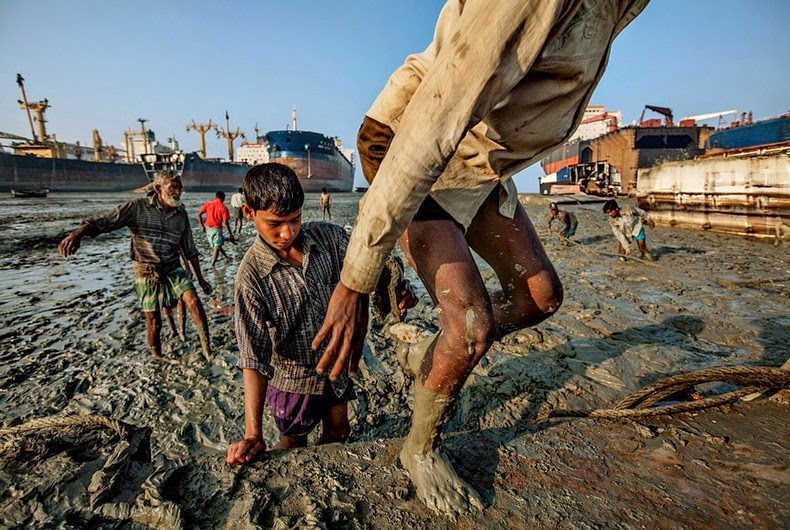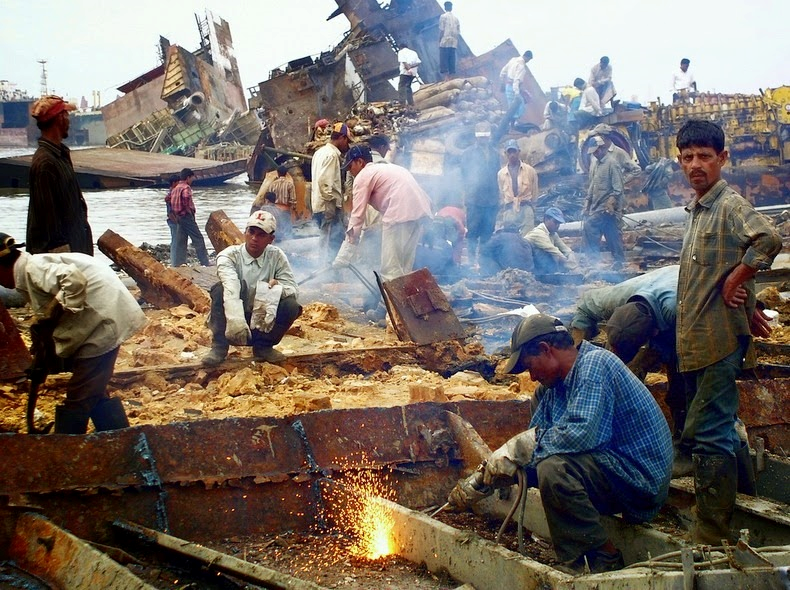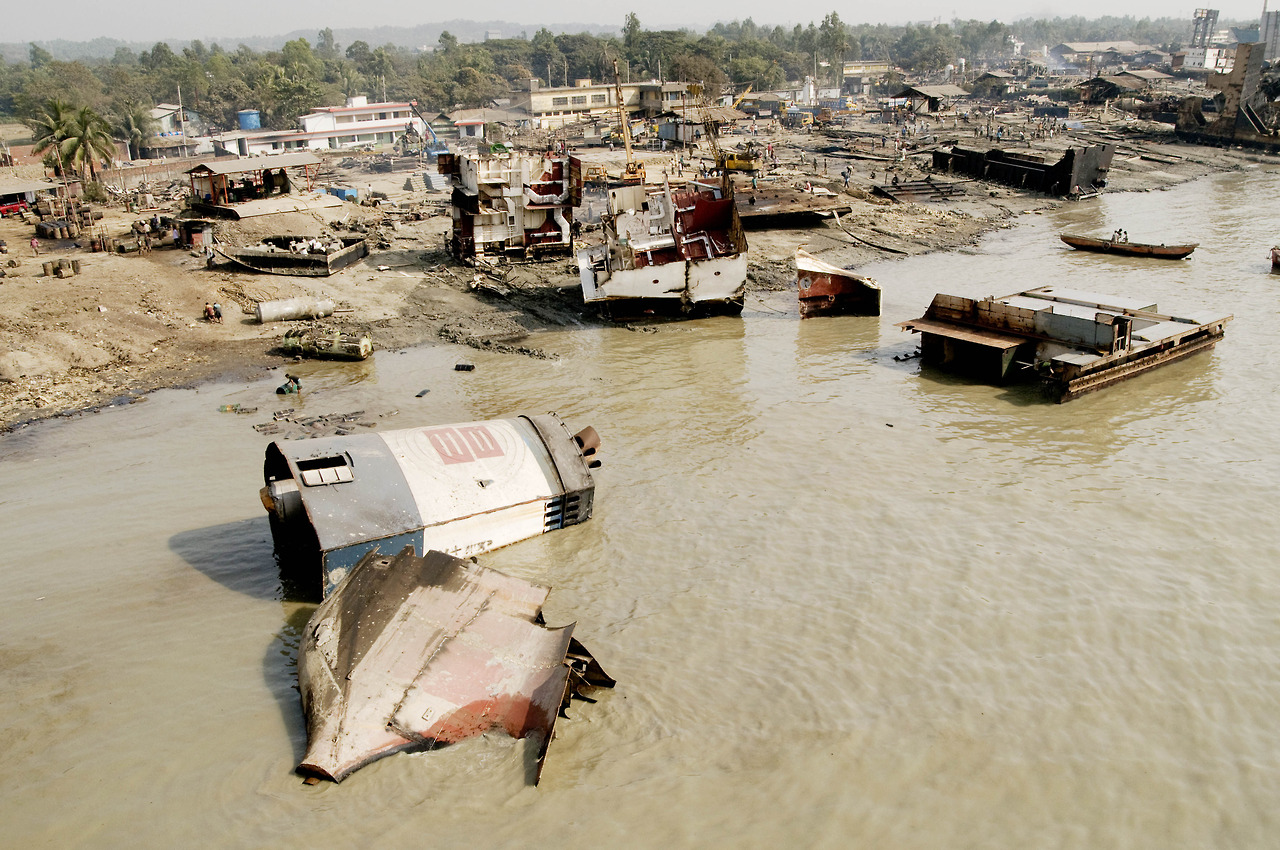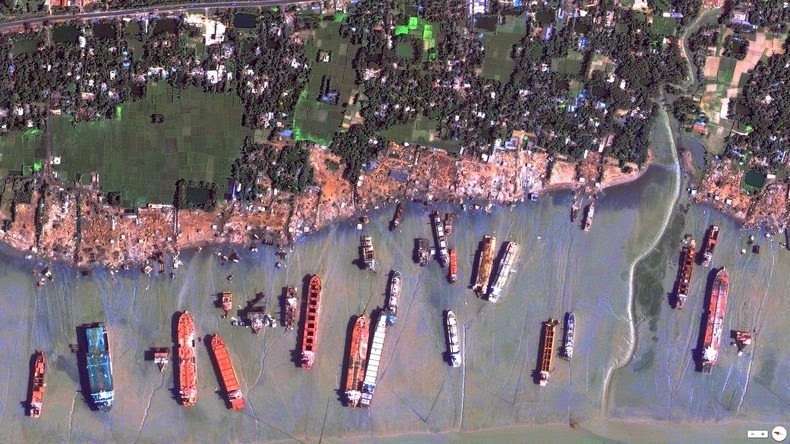The Dangerous Work of Shipbreakers
Over the last several decades, the laborious and backbreaking work of shipbreaking has shifted away from industrialized nations such as the UK and United States to countries half a world away. Ship breaking yards are now centralized in Bangladesh, Pakistan, and India due to the less regulated environmental laws regarding proper disposal of toxic waste such as lead paint and asbestos. Low labor costs is another reason why the industry has anchored itself to these countries. Laborers are paid around $4 a day to work in hazardous conditions where a blow torch and man power are the only things provided at the job. Just about everything is recycled from copper wires, diesel fuel, engine oil, and batteries. Any metal worth salvaging is hauled away to be melted into steel rods. The ship yard provides almost 80% of the steel used in Bangladesh. Unfortunately, poor safety standards come at the price of workers who fall vulnerable to explosions, electrocutions, and falling debris while many display scars, lost fingers, or gone blind from using a blowtorch.
For a similar article, try The Spectacular Blue Lava of Kawah Ijen.

